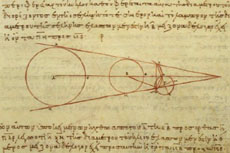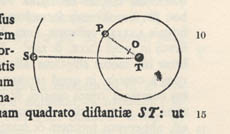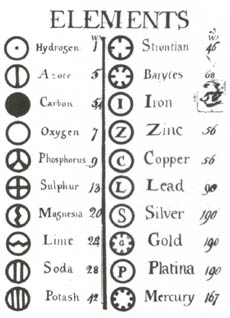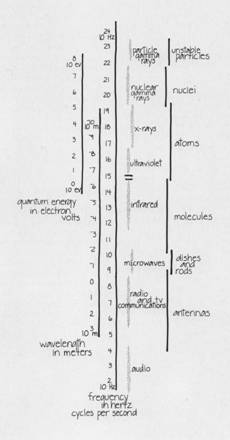Physics
Scientific knowledge is induced from observations, finding the single causal principle that explains a wide range of observed facts, integrated into all other knowledge without contradiction. (The crucial role of experimentation is to isolate possible causes.) Because scientific knowledge is the integration of observations into contextual principles, it must be understood historically, to know what it is that men observed and why certain principles are necessitated and justified by these observations.
- The Logical Leap, Induction in Physics by . All knowledge rests on induction from the evidence of sensory data, yet philosophers have claimed throughout history that knowledge is either an arbitrary, subjective fantasy or a mystic insight transmitted from another dimension, with induction and sensory evidence peripheral or irrelevant. David Harriman demonstrates the central role of induction and the precise method of valid induction, which, if followed, produces certainty. Further, he demonstrates that knowledge is the integration of sensory data, so all knowledge is contextual and open-ended. Harriman's demonstration is inductive: he uses a detailed history of science to show the inductive method in action; when the proper method has been followed, it has produced mankind's greatest achievements in knowledge, while to the extent ignored or rejected, men have stagnated in ignorance. This book should be essential reading to every philosopher, scientist, and person interested in confidently knowing the validity of knowledge and how to get it.
- The Stars, A new way to see them by . This vividly illustrated book uses a new, pictorial method to produce memorable depictions of the constellations. Additionally, it has clear diagrams and explanations of key observational ideas such as seasons, solstices, equinoxes, the ecliptic, and precession.
- The Duel between Plato and Aristotle by Leonard Peikoff. This ten-page essay, printed as an epilogue in Objectivism: The Philosophy of Ayn Rand, identifies the key ideas and consequences in the history of philosophy.
- Physical Science by . These wonderful lectures, recorded before an audience of students just learning science and mathematics, teach the critical ideas in man's knowledge of the physical world by starting at the beginning of science and showing each step by which more was learned, what evidence and reasoning validated the new knowledge and how each step built on and extended prior knowledge into wider integrations. I was a physics major when I entered college, yet I can easily say that my actual understanding of physics is much greater as a result of this course than I can credit to any other class I've taken – in large measure because I now have a clear grasp of what the physical theories actually refer to and, thus, why they are correct.
- Dialogue Concerning the Two Chief World Systems by . The Dialogue is one of the most important documents in science, readable, establishing a proper scientific methodology and demonstrating, by application of this, both a large number of new principles of nature and also that reason, not faith, produces knowledge.
- Opticks by . One of the most approachable significant works in science, Newton's Opticks shows the process of inducing scientific principles from careful observations.
- The Chemical History of a Candle by . Originally published in 1861, these lectures, by perhaps the greatest experimental physicist of all time, uses the familiar phenomenon of a candle's burning to demonstrate an enormous range of physical and chemical phenomena to an educated but non-scientist audience.
- The Forces of Matter by . Six clear and essentialized lectures by the great physicist Faraday introduce readers to six forces of nature and some introduction to the proper method of inducing scientific principles from observation.
- The Development of the Concept of Electric Charge, Electricity from the Greeks to Coulomb by . A clear historical account of the observed facts and careful reasoning by which scientists induced the concept of electric charge. (out-of-print, see sources.)
- The Character of Physical Law by . Transcriptions of lectures to a non-technical audience, explaining physics, not the detailed laws of physics but the features that characterize all the physical laws we know.
- The Taming of the Atom, The Emergence of the Visible Microworld by . The author shows us the reality of atoms, not just atoms as a useful mathematical fictuion, but that they are real entities.
- Q.E.D., The Strange Theory of Light and Matter by . A short, somewhat technical but non-mathematical popular explanation of the quantum theory as it is generally understood by many physicists today. This has the virtue of being a clearly-written exposition of the actual theory, not altered to make a simpler explanation of something other than the theory. It has the disadvantage of accepting various impossibilities such as quantum indeterminacy (a violation of the law of casality). The theory of electrons and light is about at the stage that astronomy was before Copernicus and Galileo--that is, it describes appearances without a theory of what is acting and why--and the author has the honesty to admit this.
- Powers of Ten, A Book About The Relative Size Of Things In The Universe And The Effect Of Adding Another Zero by . A journey from the largest view of the universe to the most microscopic in 42 images and extensive commentary, starting at a billion-lightyear scale. Each succeeding page is magnified ten times the preceding.
- Feynman Lectures on Physics, volume 1, Mainly Mechanics, Radiation, and Heat by . In-depth education on physics by a brilliant scientist and teacher.
- Feynman Lectures on Physics, volume 2, Mainly Electromagnetism and Matter by . Further lectures, expanding on volume 1 and investigating the interactions between matter and electromagnetism.
- Feynman Lectures on Physics, volume 3 by . Further lectures, building on volumes 2 and 3, adding quantum mechanics.
Links
- Feynman Online – This website dedicated to Richard Feynman contains the full text of Feynman Lectures on Physics, volume 1, several videos, and links to more videos of Richard Feynman.
- Junk Science – A general science site: much-needed articles debunking contemporary pseudo-science.
- Lunar Eclipse Computer – Computes the times of upcoming lunar eclipses for any location.
- Magnetism and Astronomy Links – Links to homeschool resources for education and experimentation on astronomy and magnets.
- The Newtonian Moment – Exhibit at the New York Public Library celebrating Isaac Newton's achievements and effect on civilization.
Credits
- Suggestions for many of the books I have chosen for this list as well as the historical approach taken: David Harriman, Physicist
copyright © 2024 Andrew Layman, all rights reserved, 1/15/2024 6:08:35 PM, Topic: Physics, http://www.strongbrains.com

Isaac Newton

Aristarchus's (310 BC to 230 BC) diagram, On the Distances and Sizes of the Sun and Moon in which he shows that the sun is at least between 18 and 20 times the distance of the moon.

Illustration from Newton's Philosophia Naturalis Principia Mathematica, 1726

Dalton's Elemental Symbols

Frequency ranges and corresponding energy types, from Powers of Ten.